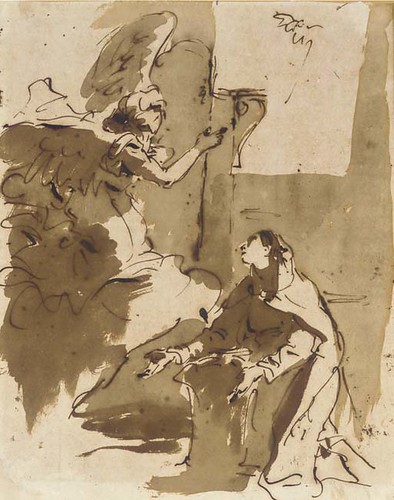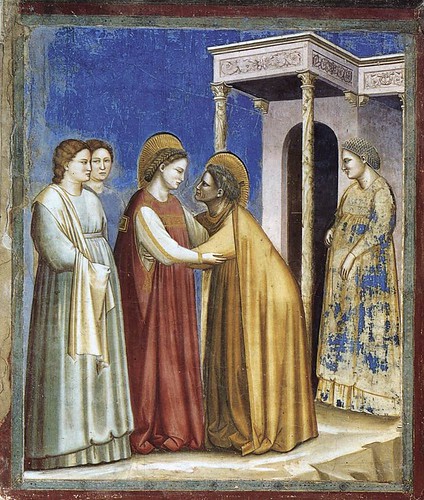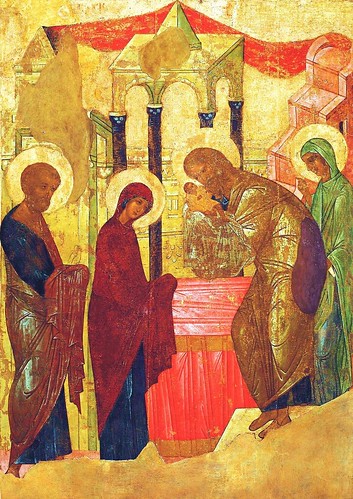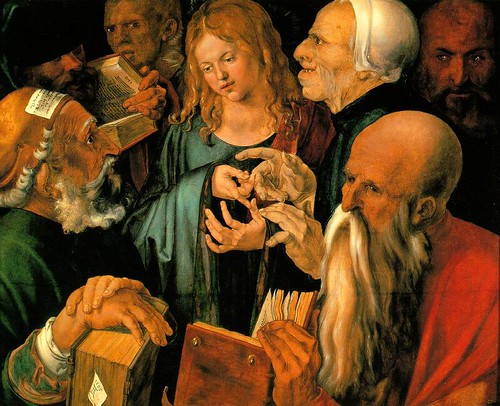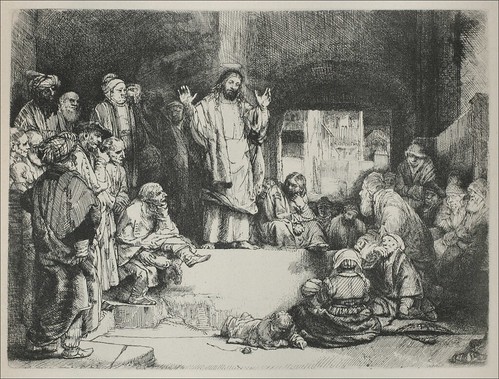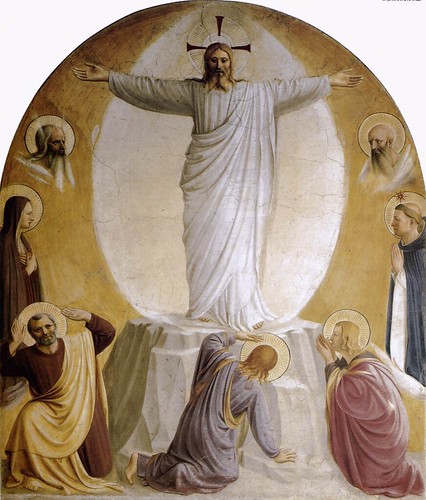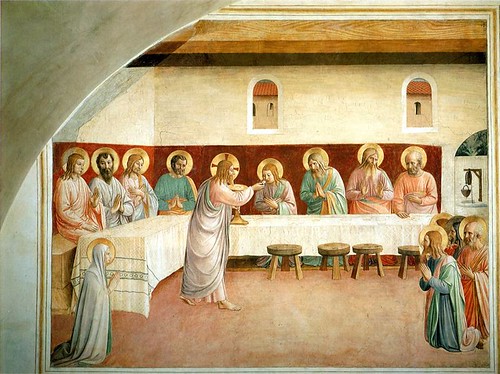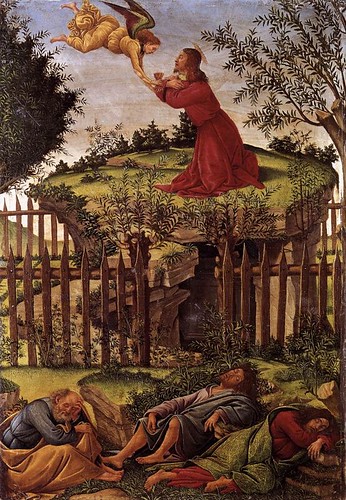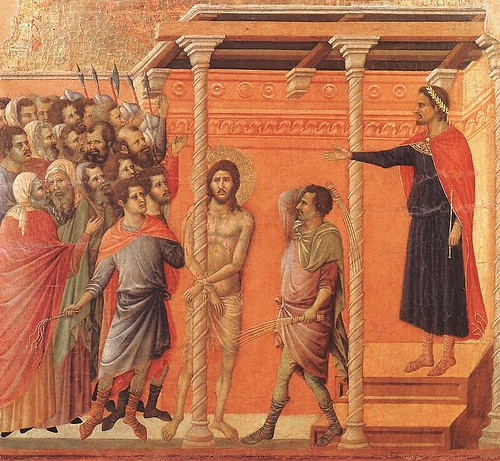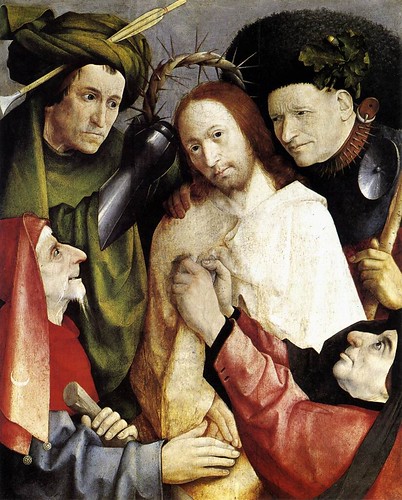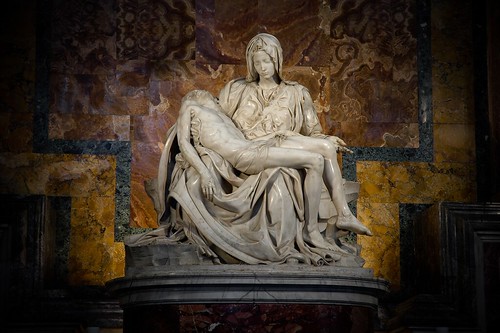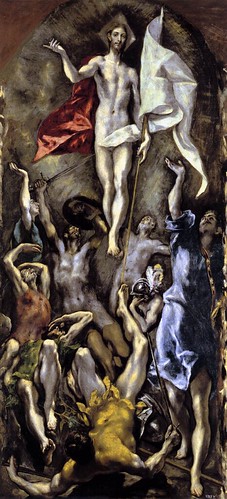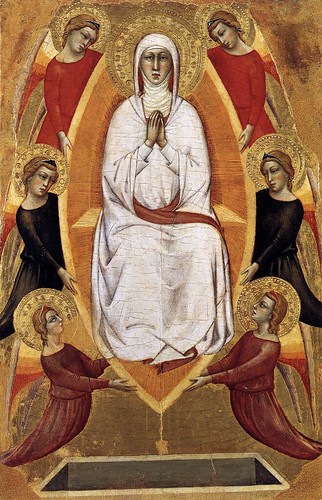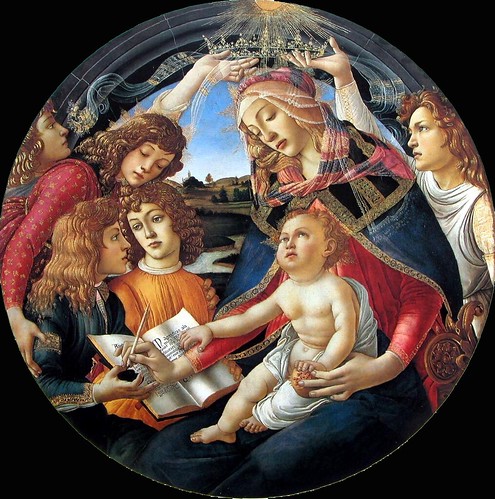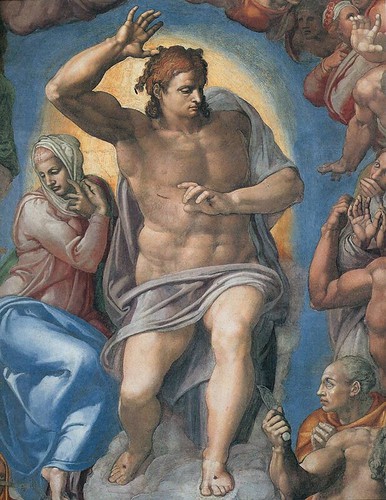Capsule summaries of the books of the Bible
If you're trying to decide what book in the Bible to read next, here's a handy list with brief descriptions of each (taken from Wikipedia).
I've also indicated the number of pages, if you're like me and want to start with the shortest books!
I've also indicated the number of pages, if you're like me and want to start with the shortest books!
- Genesis. (39 pages) It contains biblical stories from the creation of the world to the descent of the children of Israel into Egypt, and some of the best-known biblical stories, including Adam and Eve, Cain and Abel, Noah's Ark, the Tower of Babel, and the biblical Patriarchs.
- Exodus. (33 pages) It tells how Moses leads the Hebrews out of Egypt and through the wilderness to the Mountain of God Sinai.
- Leviticus. (23 pages) Contains laws and priestly rituals.
- Numbers. (33 pages) The numbering of the people of Sinai, and their journey from Sinai to Moab.
- Deuteronomy. (30 pages) It is a set of three sermons delivered by Moses reviewing the previous forty years of wandering in the wilderness. Its central element is a detailed law-code by which the Children of Israel are to live in the Promised Land.
- Joshua. (19 pages) The history of Israel from the possession of the Promised Land (Moses) to the Babylonian Captivity (Joshua).
- Judges. (20 pages) The history of Biblical judges, who helped rule and guide the ancient Israelites, ending with Samson.
- Ruth. (3 pages) Story of Ruth, daughter-in-law of Naomi.
- 1 Samuel. (25 pages) Samuel, Saul, and David.
- 2 Samuel. (22 pages) David's reign.
- 1 Kings. (25 pages) Kings of the Kingdom of Israel and the Kingdom of Judah, from the accession of Solomon until the subjugation of the kingdom by Nebuchadnezzar and the Babylonians.
- 2 Kings. (24 pages) See above.
- 1 Chronicles. (22 pages) Genealogies, and a history of David's reign.
- 2 Chronicles. (27 pages) King Solomon, and the kings of Judah, to the time of the Babylonian exile.
- Ezra. (8 pages) The history of the first and second return of exiles.
- Nehemiah. (11 pages) An account of the rebuilding of the wall of Jerusalem, and of the state of religion among the Jews during this time.
- Tobit. (9 pages) This book tells the story of a righteous Israelite named Tobit living in Nineveh after the deportation of the northern tribes of Israel to Assyria. He was particularly noted for his diligence in attempting to provide proper burials for fallen Israelites who had been slain by Sennacherib.
- Judith. (12 pages) The story revolves around Judith, a daring and beautiful widow, who is upset with her Jewish countrymen for not trusting God to deliver them from their foreign conquerors. Gaining the trust of the Assyrian leader, she is allowed access to his tent one night and decapitates him, saving Israel.
- Esther. (9 pages) It tells a story of palace intrigue and genocide thwarted by a Jewish queen of Persia.
- Job. (26 pages) It relates the story of Job, his trials at the hands of Satan, his theological discussions with friends on the origins and nature of his suffering, and finally a response from God.
- Psalms. (68 pages) The Book of Psalms consists of 150 psalms, each of which constitutes a religious song.
- Proverbs. (22 pages) A collection of ethical teachings, attributed to King Solomon.
- Ecclesiastes. (6 pages) The work consists of personal or autobiographic matter, at times expressed in aphorisms and maxims illuminated in terse paragraphs with reflections on the meaning of life and the best way of life. The work emphatically proclaims all the actions of man to be inherently vain.
- Song of Solomon. (5 pages) The main characters of the Song are simply a woman and a man, and the poem suggests movement from courtship to consummation.
- Wisdom of Solomon. (16 pages) The Book of Wisdom offers the traditional and pious philosophy that trust and fear of God provide the path to redemption.
- Sirach. (43 pages) The Book of Ben Sira is a collection of ethical teachings, closely resembling Proverbs.
- Isaiah. (52 pages) In the first 39 chapters, Isaiah prophesies doom for a sinful Judah and for all the nations of the world that oppose God. The last 27 chapters prophesy the restoration of the nation of Israel.
- Jeremiah. (50 pages) Records the words and events surrounding the life of the Jewish prophet Jeremiah who lived at the time of the destruction of Solomon's Temple during the fall of the Kingdom of Judah at the hands of Babylonia.
- Lamentations of Jeremiah. (6 pages) The book consists of five separate poems. Laments the ruin and desolation that had come upon the city and temple.
- Baruch. (6 pages) During the Diaspora the Jews lamented their lapse into idolatry, and their repentance is captured in the Book of Baruch.
- Ezekiel. (41 pages) Visions, judgments, and laments of the prophet Ezekiel.
- Daniel. (18 pages) Court stories of Daniel and his friends, and his interpretations of royal dreams and visions.
- Hosea. (9 pages) Hosea is believed to be the first prophet to use marriage as a metaphor of the covenant between God and Israel, and he influenced latter prophets such as Jeremiah.
- Joel. (4 pages) A prophecy of a great public calamity then impending over the land, consisting of a want of water and an extraordinary plague of locusts.
- Amos. (7 pages) God speaks to Amos, a farmer and herder, and tells him to go to Samaria, the capital of the Northern kingdom. Through Amos, God tells the people that he is going to judge Israel for its sins, and it will be a foreign nation that will enact his judgment.
- Obadiah. (2 pages) Foretells total destruction in the land of Edom at the hand of the Lord.
- Jonah. (2 pages) The story of a reluctant prophet who arguably becomes one of the most effective prophets in the entire Bible.
- Micah. (5 pages) Oracles of judgment and of hope.
- Nahum. (3 pages) The subject of this prophecy is the approaching complete and final destruction of Nineveh, the capital of the great and at that time flourishing Assyrian empire.
- Habakkuk. (3 pages) A dialogue between God and the prophet. "The just shall live by faith."
- Zephaniah. (3 pages) The coming judgment on Judah and on Israel's enemies.
- Haggai. (2 pages) The prophet urges the people to proceed with the rebuilding of the second Jerusalem temple after the return of the deportees.
- Zechariah. (7 pages) Visions about the history of Israel, followed by oracles of the future.
- Malachi. (2 pages) The first part inveighs against the priests and the people; the second part contains a discourse full of promise.
- 1 Maccabees. (25 pages) It tells how the Greek ruler Antiochus IV Epiphanes attempted to suppress the practice of basic Jewish religious law, resulting in a Jewish revolt against Seleucid rule.
- 2 Maccabees. (17 pages) Focuses on the Jews' revolt against Antiochus IV Epiphanes and concludes with the defeat of the Syrian general Nicanor in by Judas Maccabeus, the hero of the work.
- Matthew. (29 pages) Of the four canonical gospels, Matthew is most closely aligned with first century Judaism.
- Mark. (18 pages) A swift narrative, concentrating particularly on the last week of Jesus' life.
- Luke. (30 pages) Certain popular stories, such as the prodigal son and the good Samaritan, are found only in this gospel.
- John. (22 pages) Of the four gospels, John presents the highest Christology, describing Jesus as the Logos.
- Acts of the Apostles. (26 pages) Acts tells the story of the Apostolic Age of the Early Christian church, with particular emphasis on the ministry of the Twelve Apostles and of Paul of Tarsus.
- Romans. (12 pages) Paul wishes to impart to the Roman readers encouragement and assurance in all that God has freely given them.
- 1 Corinthians. (22 pages) Paul wrote this letter to correct what he saw as erroneous views in the Corinthian church. This epistle contains some of the best-known phrases in the New Testament, including "all things to all men", "without love, I am nothing", "through a glass, darkly", and "when I was a child, I spoke as a child, I felt as a child, I thought as a child".
- 2 Corinthians. (7 pages) Reassures the people of Corinth that they will not have another painful visit, but that what he has to say is about the love he has for them.
- Galatians. (4 pages) It is principally concerned with the controversy surrounding Gentile Christians and the Mosaic Law within early Christianity. Along with the Epistle to the Romans, it is the most theologically significant of the Pauline epistles.
- Ephesians. (4 pages) Paul addressed issues appropriate to the diverse religious and cultural backgrounds present in the community. Ephesians is also notable for its treatment of women.
- Philippians. (3 pages) The church at Philippi was very attached to Paul, just as he was very fond of them. Of all the churches, their contributions (which Paul gratefully acknowledges) are among the only he accepts.
- Colossians. (3 pages) Members of the Colossian congregation had incorporated pagan elements into their practice, including worship of elemental spirits. Paul declares Christ's supremacy over the entire created universe and exhorts Christians to lead godly lives.
- 1 Thessalonians. (3 pages) Likely the first of Paul's letters. Important misunderstandings existed concerning his teaching of Christianity. Paul devotes part of the letter to correcting these errors, and exhorts the Thessalonians to purity of life.
- 2 Thessalonians. (2 pages) Some of the Thessalonicans grew concerned over whether those who had died would share in the parousia. This letter was written in response to this concern.
- 1 Timothy. (3 pages) Counsels to Paul's younger colleague regarding his ministry in Ephesus, including instructions on the forms of worship and organization of the Church.
- 2 Timothy. (2 pages) Paul anticipates his death and exhorts Timothy to all diligence and steadfastness in the face of false teachings, with advice about combating them, remaining patient under persecution.
- Titus. (2 pages) Its purpose is to describe the requirements and duties of elders and bishops.
- Philemon. (1 page) The epistle is the most important early Christian writing dealing with forgiveness.
- Hebrews. (9 pages) Letter to Jewish Christians. Contains many Old Testament references. A consciously "literary" document, noted for the purity of its Greek.
- James. (3 pages) Framed within an overall theme of patient perseverance during trials and temptations, the text condemns various sins and calls on Christians to be patient while awaiting the Second Coming.
- 1 Peter. (3 pages) The letter is addressed to various churches in Asia Minor suffering religious persecution. Contains the teaching of "the gospel preached even to the dead".
- 2 Peter. (2 pages) Peter criticizes "false teachers" who distort the authentic, apostolic tradition, and predicts judgement for them. He calls on Christians to wait patiently for the parousia and to study scripture.
- 1 John. (3 pages) A sermon written to counter heresies that Jesus did not come "in the flesh," but only as a spirit. It also defines how Christians are to discern true teachers.
- 2 John. (1 page) The shortest book in the Bible. Warns against paying heed to those who say that Jesus was not a flesh-and-blood figure.
- 3 John. (1 page) The second shortest book in the Bible. The purpose of the letter is to encourage and strengthen Caius, and to warn him against the party headed by Diotrephes, who refuses to cooperate with the presbyteros who is writing.
- Jude. (1 page) It was composed as an encyclical letter—that is, one not directed to the members of one church in particular, but intended rather to be circulated and read in all churches.
- Revelation. (13 pages) It is the only biblical book that is wholly composed of apocalyptic literature. Revelation is considered by some to be one of the most controversial and difficult books of the Bible, with many diverse interpretations of the meanings of the various names and events in the account.
